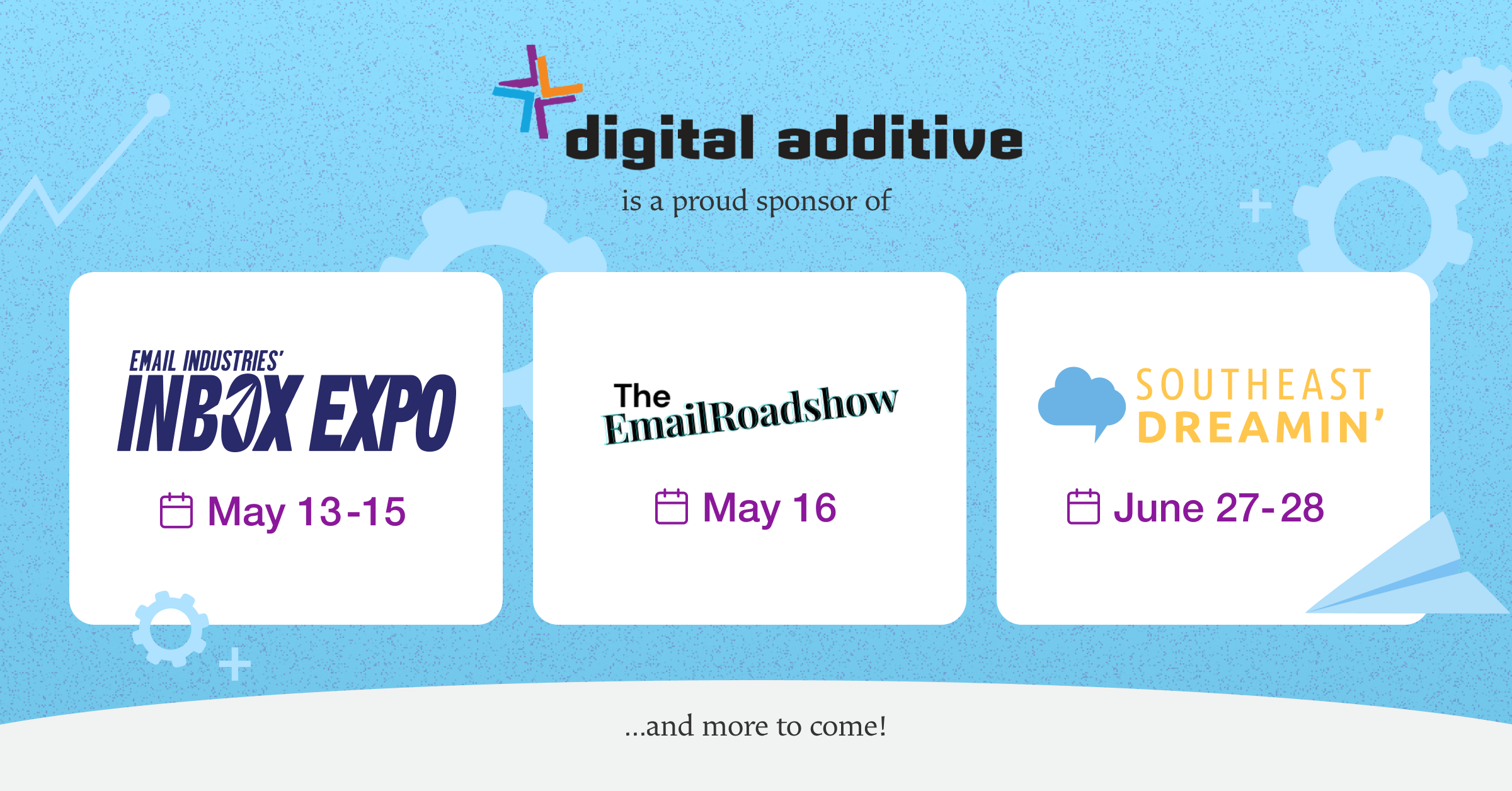If you’re in the realm of email marketing, you know how difficult it can be to keep some of the terms and concepts that are commonly used in the industry clear in your mind. Don’t worry — we’re here to help!
We’ve put together a helpful glossary of 23 of the most common terms and tricky acronyms you’ll come across in your life as an email marketer:
A/B Testing: The process of sending two variations of a single email to two groups and determining which one performed better based on a selected Key Performance Indicator (KPI), usually open rate or click rate. A/B tests can explore different subject line, copy, or design variations to determine which one resonates more with the audience, and the findings can be applied to future emails.
Bounce: When an email is unable to be delivered to its intended recipient for whatever reason, it is called a bounce. There are two types of bounces: hard bounces and soft bounces.
Hard Bounce: Occur when an email is unable to be delivered due to a permanent issue such as an invalid email address/domain name, or if the email server has completely blocked its entry.
Soft Bounce: Occur when an email is unable to be delivered due to a temporary issue such as the user having a full inbox. These can usually be resolved by the recipient.
CAN-SPAM: The Controlling the Assault of Non-Solicited Pornography and Marketing Act — A law that determines guidelines that businesses must follow when sending emails. Under CAN-SPAM guidelines, subscribers must have a simple way to unsubscribe and email campaigns must have an accurate sender profile.
Campaign: An email (or series of emails) with a specific marketing goal in mind, whether it be promoting a product, announcing an event, or anything else that needs to be communicated via email to subscribers.
Churn Rate: The percentage of users unsubscribing from an email list within a certain period of time.
CTA: Call to Action — An instruction to subscribers intended to initiate a specific action such as making a purchase, signing up for a newsletter, or scheduling an appointment.
CTR: Click Through Rate — The percentage of users who clicked on a link in an email relative to the total number of email recipients. This is one way to measure how effective an email was at getting its recipients to take the desired action.

CTOR: Click-to-Open Rate — The percentage of users who clicked on a link in an email relative to the total number of unique opens. This is a more specific measure of engagement, as it only counts users who actually opened the email as opposed to everyone it was sent to.
Deliverability: The measure of which emails successfully make it to their intended recipients’ inboxes. Deliverability can be affected by sender score, spam filters, or list quality.
ESP: Email Service Provider — A platform that is used to send and receive emails. Some examples of popular ESPs include Gmail, Yahoo, and Outlook.
Engagement Fatigue: This is what happens when subscribers start to feel overwhelmed with too many emails and begin to ignore them. To prevent engagement fatigue, it’s important to send relevant content on a schedule that resonates with subscribers.
GDPR: General Data Protection Regulation — A set of privacy laws in the European Union regulating how personal data is collected and used. Although the GDPR is a set of laws specific to the European Union, it applies to all organizations with EU-based audiences, even if the companies themselves are based elsewhere.
KPI: Key Performance Indicator — Measures the performance of different aspects of your email campaign, including click rate, open rate, conversion rate, and more.
Open Rate: The percentage of emails that were opened relative to the number of emails sent. A high open rate is an indicator that the subject line is doing its job to get users to click on the emails that they are receiving, though check out our “What Ever Happened to the Open Rate” article to see how Apple’s Mail Privacy Protection feature impacted the reliability of this metric.

Opt-In: When a user decides to receive emails from a company, they can opt-in by providing their email address and joining the mailing list.
Opt-Out: If a user decides to stop receiving emails from a company, they can opt-out by unsubscribing. In order to remain CAN-SPAM compliant, it is required to include an easy way for subscribers to opt-out of every commercial email.
Segmentation: The process of dividing an email audience into smaller groups based on shared characteristics, like how long it has been since they have made a purchase. By segmenting the audience, it is possible to send targeted and relevant content to each group separately.
Sender Profile: The from-information of any given email.
Sender Score: The reputation of an IP address scored from 0 to 100, with a higher score indicating a more reputable IP. The sender score can greatly affect deliverability.
Spam Filter: Software utilized by all major ESPs intended to identify and prevent unwanted emails from entering users’ inboxes by checking aspects such as sender profile, subject line, and links to determine whether it’s likely to be spam.
Trigger: An email deployed as a result of a user’s action, such as cart abandonment or order confirmation.
When it comes to knowing the language of email marketing inside and out, it can help to have an expert on your side. You can count on Digital Additive for that and so much more. Want to get to know us better? Reach out today!




